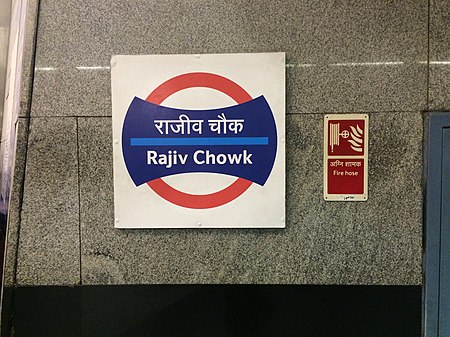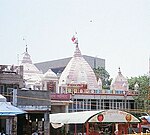Rajiv Chowk metro station

The Rajiv Chowk is a Delhi Metro station in Delhi, on the Blue and Yellow Lines. It is a transfer station between the Blue Line on the upper level and the Yellow Line on the lower level.It is one of the busiest stations on the network, serving Rajiv Chowk in the heart of Delhi. It handles 5 lakh passengers every day. Connaught Place metro station has area of about 39,503 square feet (3,669.9 m2).Many businesses and important buildings, restaurants, and cinemas are situated just outside the station. The station is constructed below Central Park. Connaught Place is officially known as Rajiv Chowk, formerly known as Connaught Circus. In September 1995, the Home Ministry decreed that henceforth, the 75-year-old Connaught Place (CP) will be known as Rajiv Chowk and Connaught Circus as Indira Chowk.
Excerpt from the Wikipedia article Rajiv Chowk metro station (License: CC BY-SA 3.0, Authors, Images).Rajiv Chowk metro station
Radial Road 6, New Delhi
Geographical coordinates (GPS) Address Nearby Places Show on map
Geographical coordinates (GPS)
| Latitude | Longitude |
|---|---|
| N 28.632846 ° | E 77.219639 ° |
Address
Rajiv Chowk Central Park
Radial Road 6
110001 New Delhi (Chanakya Puri Tehsil)
Delhi, India
Open on Google Maps









